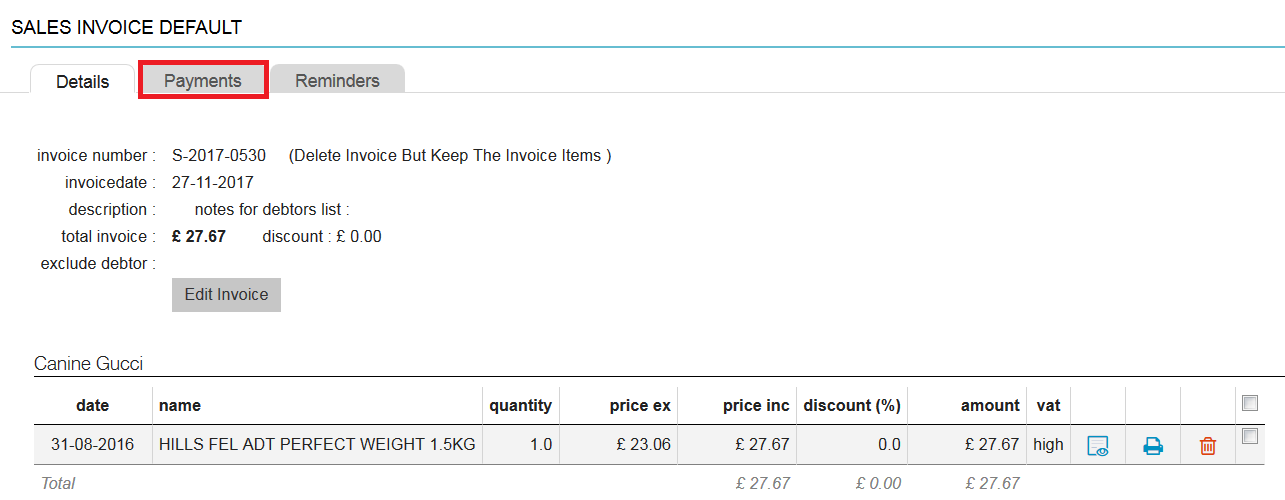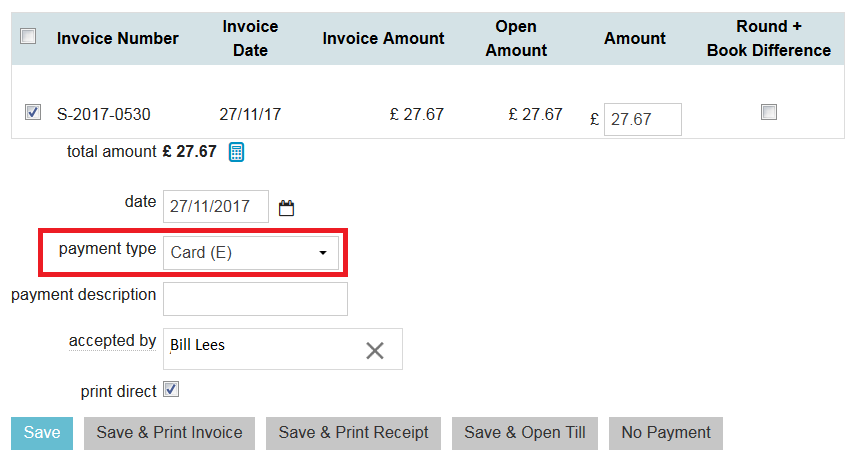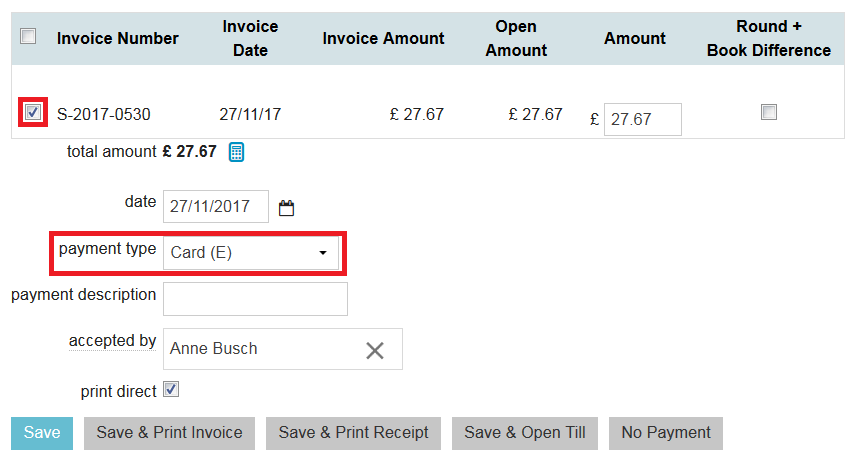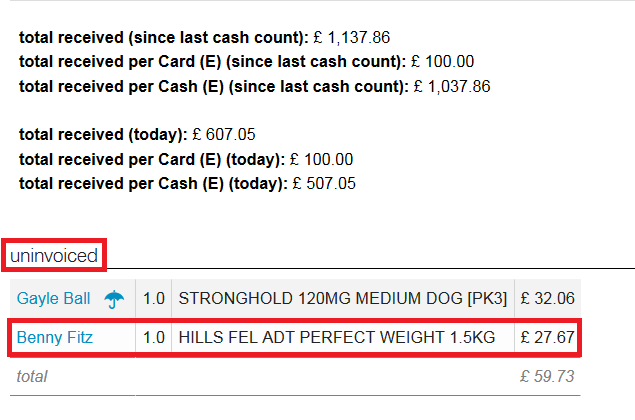Animana tracks payments throughout the day. Thus, at the end of the day it expects a specific amount on the card machine and in the cash drawer, based on the recorded transactions in Animana. This article will guide you in solving positive card differences in your day overview.
Should you make corrections to transactions, do not forget to adjust the time of cash count in the day overview to a minute or so later than the time the last correction was executed.
Before you start
If you do not know how to do a cash count, read the following article first: How do I do a day-end cash count (Day Overview)?
Should you have a different error in your day overview, please read the following article: How do I correct errors in the day overview?
Reasons and solutions for positive card differences
If you have performed a cash count and there is a positive card difference, you will see the following red alert:
![]()
Remember that your card machine is always correct. The amount your card machine says was paid by card is always the amount that was actually paid by card. So by definition, a card difference in Animana is caused by a mistake in payment registration. The following mistakes can occur:
1: The card amount in Animana was not entered correctly
Solution: double-check if the card amount on your card machine is the same as the amount you entered in the field “card” in the day overview (![]() > Financial > Day Overview).
> Financial > Day Overview).

To correct, adjust the amount and click Save.
2: Time of cash count is not correct
Make sure the time of cash count is set at a time after your latest transaction, to make sure that all transactions are included in the day overview. If you make a correction to a transaction, do not forget to adjust the time in the day overview to a minute or so later than the time the latest correction was executed.

To correct, adjust the time by clicking on the hour and/or minutes and select a different time in the drop-down menu for time. Then click Save.
3: An invoice was paid by card but was recorded as paid by a different payment method
Compare the list of payments on the card machine (the amounts) to the list of payments in the section “Payments” of the day overview. You would expect more card payments on the machine than recorded in Animana. Look for an invoice in the list that has a payment listed as something other than a card payment that should have been recorded as a card payment (check the amount to determine which one).

In the screenshot above, invoice S-2017-0530 for client Victoria Bouquet was recorded as paid by cash but was actually paid by card.
To correct, proceed as follows:
- Click on the name of the client to go to their Client File.
- Click the relevant invoice to open it (in the example: invoice S-2017-0530).
- Click on the tab Payments at the top.

- Click the date, amount or payment type to open the payment details.
- Correct the payment type by clicking on the drop-down menu and selecting “card”.

- If needed, you can also edit the other fields (payment date, amount, description, etc).
- Click Save.
- In the day overview, do not forget to adjust the time of cash count and click Save again.
4: An invoice was created and paid but the payment wasn’t recorded
When an invoice has been created and you received the payment via card but forgot to record the payment in Animana, then that invoice will be recorded as an open invoice in Animana. Therefore, the invoice will be listed in the section “Open invoices” of the day overview.

In the screenshot above, invoice S-2017-0530 for client Victoria Bouquet is recorded as an open invoice but was actually paid by card.
To correct, proceed as follows:
- Click on the name of the client to go to their Client File.
- Click the relevant invoice to open it (in the example: invoice S-2017-0530). It will be displayed in red because the invoice has not been (fully) paid.
- Click on the button Payment.

- Select the payment method. In this example, you would choose “Card”.

- Select the invoice and make sure the payment type is “Card”.

- Click Save.
- In the day overview, do not forget to adjust the time of cash count and click Save again.
5: An invoice was not created and the payment was received but not recorded
When you received a card payment but forgot to create an invoice and also forgot to record the payment in Animana, then you will not have an invoice number. In this case, the products added to a patient (or herd) will be listed in the section “Uninvoiced” of the day overview. This section is displayed at the bottom of the day overview page.

In the screenshot above, the bag of Hills for the cat owner Benny Fitz is recorded as uninvoiced, but was actually paid by card.
To correct, proceed as follows:
- Click on the name of the client to go to the Uninvoiced tab of this client.
- Click Create Invoice.

- Select the payment method. In this example, you would choose “Card”.

- Select the invoice and make sure the payment type is “Card”.

- Click Save.
- In the day overview, do not forget to adjust the time of cash count and click Save again.
6: A card payment was done yesterday after the cash count
Animana uses a cash count for the day overview instead of a day count. This means it counts from cash count to cash count, not from day-to-day.
For example, if you do a cash count on Monday evening at 18:00 o’clock and you have an emergency patient at night it is no problem to do the next cash count on Tuesday. That cash count will then contain all transactions made after Monday at 18:00 o’clock.
For this reason, a positive card difference can also be caused by a card payment that took place the day before, but after yesterday’s cash count. In that case, the payment has been recorded yesterday but should be included in today’s cash count.
If this is the case, you can adjust the amount in the field “card” and then click Save.
Related articles
- How do I do a day-end cash count (Day Overview)?
- How do I correct errors in the day overview?
- How do I correct a negative card difference in the day overview?
- How do I correct a negative cash difference in the day overview?
- How do I correct a positive cash difference in the day overview?
- How do I book a receipt?
- How do I book a cash transfer?
